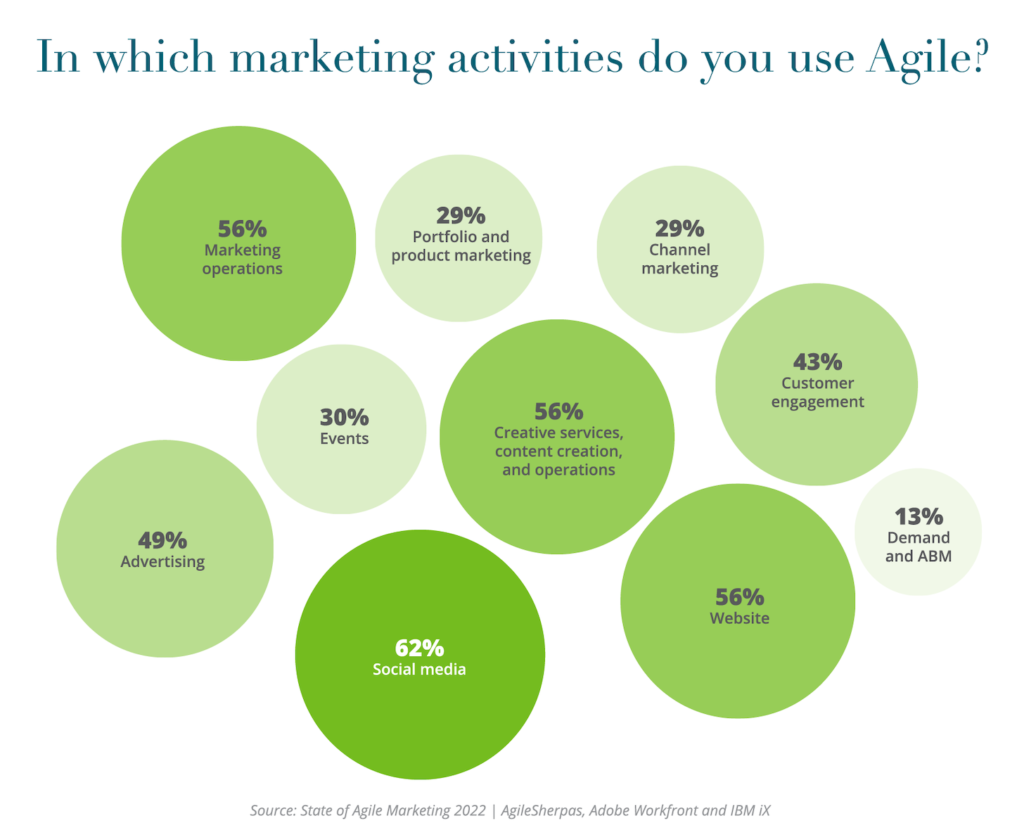One of my favorite marketers in the Boston area is Frank Days. He’s super smart, speaks his mind, and is a great champion of innovation in the marketing department. He was one of the early pioneers of agile marketing, implementing it at Novell several years ago and sharing his experience with others.
So I was excited to finally catch up with him for an interview on some of his current thinking about agile marketing. You can also read more of his thoughts on agile marketing at the Agile Marketing Blog, on his own blog tangyslice, and on his Twitter stream.
Start by telling us a little bit about your background and your current work. What are you passionate about in marketing?
I started my marketing career in the mid 90’s as a product manager in the medical diagnostics industry. It was very much a marketing 1.0 world at the time, with a traditional mix of trade shows, print advertising and direct mail.
I then got my MBA at the MIT Sloan school in the late 90’s, just as the Internet exploded. After graduation, I spent a number of years as a marketing VP for a series of private and venture funded software companies. This allowed me to combine my passion for marketing with my strong interest in information technology.
Around 2007, I had a panic attack that I had missed the social media revolution and immersed myself in everything I could do: blogging, podcasting, and content curation. My passion in marketing is finding new, more cost effective ways to use online programs to spread the word in narrow B2B markets. There is no shortage of B2C marketing pundits and punditry, but much less on the B2B side of things.
You were one of the very first champions of agile marketing. What inspired you to bring agile methods to a marketing team?
First off, I loathe marketing plans. In fast moving start-up environments where I have worked, marketing plans were approaching useless given their short shelf lives. I didn’t know what agile was, but I often found myself using agile approaches.
“In fast moving start-up environments where I have worked, marketing plans were approaching useless given their short shelf lives.”
For example, in one company we were behind in our recruiting, which was putting a damper on our growth. The CEO would have daily sit-downs with everyone at 8am to review our recent tasks and plans for the day.
I started a modified version of this in marketing, where we would do three short meetings a week. It wasn’t until I talked with a developer fiend that I learned about agile and shared what we were doing. In a pure sense, we were not using much of the agile methodology, but the spirit of the approach made us more flexible, responsive and results driven.
At a recent agile marketing meet-up, you boldly declared that “the marketing plan is dead.” That’s a conversation starter. Can you elaborate?
I haven’t written a traditional marketing plan in over 10 years. That doesn’t mean we don’t do planning. We have monthly sprint planning meetings, as well as reviews of our monthly sprints.
Thoughtful reflection and prioritization are essential. What I think is a waste is a 20-page Word doc or a 200-cell spreadsheet with everything you hope to do for the next 6 or 12 months.
“Thoughtful reflection and prioritization are essential. What I think is a waste is a 20-page Word doc or a 200-cell spreadsheet.”
Last time I saw a statistic, the average CMO has a tenure of around 20 months. Time-to-results is what matters. A well-crafted story of how you get there makes people feel better in the short term, but nothing speaks louder than getting things done on-time and delivering results.
How much of agile marketing is process and how much of it is culture?
I am not a certified scrum master, and most agile people on the software side of things would be shocked with what most marketers call Agile. We do one-month sprints (blocks of work) around 3 core themes. We scrum three times a week since daily seems too frequent. I play product owner and scrum master. We don’t use burndown charts of planning poker. Our capacity is reflected by an average number of tasks per sprint, and we leave about 30% spare capacity for ad hoc tasks.
A big part of it is culture. We are constantly evaluating the value of each task against others. This also avoids the “I’ve been asking for this for 6 months” syndrome that often comes from sales. If sales asks for something more than once, then we discuss, decide, and communicate expecatation to the business rather that it getting lost in the ether.
Are there aspects of marketing that don’t lend themselves to agile management? What do you do with those pieces?
Things like media buying and trade shows are less agile. We discuss them in our sprint planning meetings and try to work them into the scrum process, but in the end of the day they often have separate workback schedules.
If you could share 30 seconds of advice with fellow CMOs everywhere, what would you tell them?
Think like a scientist. Generate new hypotheses and find rapid, low cost ways to test new ideas. This is where the breakthroughs come from.
“Think like a scientist.”
Thank you, Frank!




Great article. Thanks Frank.
Any thoughts on how to reset your peer’s expectations who may be demanding a more traditional planning aproach to mktg. Finance comes to mind.